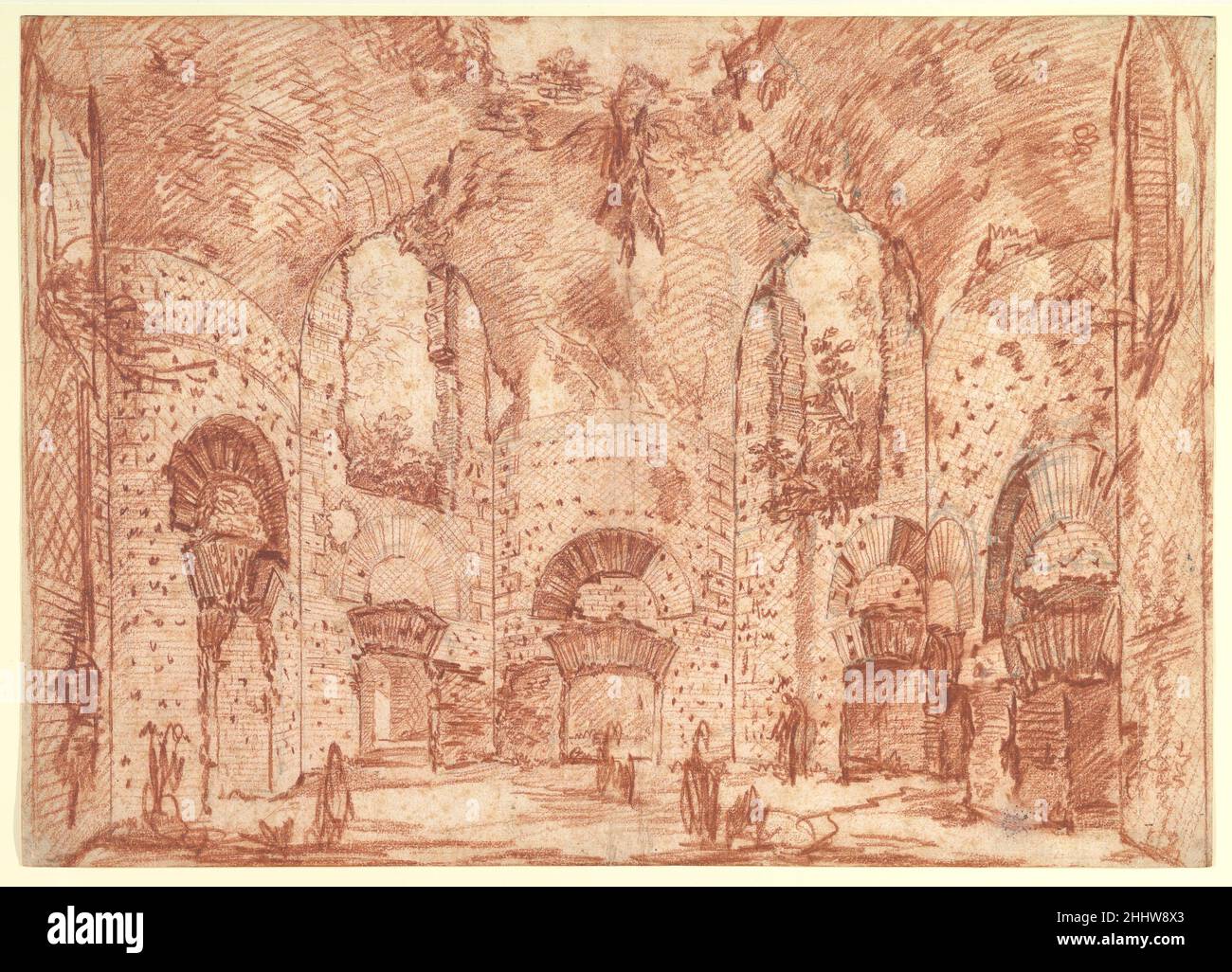The Octagonal Room in the Small Baths at the Villa of Hadrian (Tivoli) ca. 1777 Giovanni Battista Piranesi Italian The Venetian Piranesi was active as a draftsman, designer, architect, archaeologist, and theorist, but it is as a printmaker that he achieved his most enduring fame. His technically brilliant and exceedingly influential etchings reflect his antiquarian interests and offered audiences across Europe a rich visual record, at once archaeological and poetic, of the glories of ancient Rome.This drawing represents an octagonal chamber—perhaps an apodyterium, or changing room—in the bath

Image details
Contributor:
MET/BOT / Alamy Stock PhotoImage ID:
2HHW8X3File size:
33 MB (3.2 MB Compressed download)Releases:
Model - no | Property - noDo I need a release?Dimensions:
4000 x 2881 px | 33.9 x 24.4 cm | 13.3 x 9.6 inches | 300dpiDate taken:
19 January 2022More information:
This image is a public domain image, which means either that copyright has expired in the image or the copyright holder has waived their copyright. Alamy charges you a fee for access to the high resolution copy of the image.
This image could have imperfections as it’s either historical or reportage.
The Octagonal Room in the Small Baths at the Villa of Hadrian (Tivoli) ca. 1777 Giovanni Battista Piranesi Italian The Venetian Piranesi was active as a draftsman, designer, architect, archaeologist, and theorist, but it is as a printmaker that he achieved his most enduring fame. His technically brilliant and exceedingly influential etchings reflect his antiquarian interests and offered audiences across Europe a rich visual record, at once archaeological and poetic, of the glories of ancient Rome.This drawing represents an octagonal chamber—perhaps an apodyterium, or changing room—in the bath complex at Hadrian's Villa at Tivoli, the sprawling remains of which provided subject matter for a number of Piranesi's prints. It is a preparatory study for an etching in the second volume of his Vedute di Roma (Views of Rome), an ambitious undertaking in which the artist was engaged for more than thirty years. The corresponding print—his final view of Hadrian's Villa—was published in 1777, one year before his death. Piranesi's enduring fascination with the marvels of Roman architecture and engineering is manifest in his faithful depiction of its arches, masonry, and partially preserved poured concrete roof. A certain poetic, proto-Romantic sensibility mitigates the strictly archaeologizing view: the overgrown, decaying ruins are an ineffable reminder of the passage of time and the transience of earthly life.. The Octagonal Room in the Small Baths at the Villa of Hadrian (Tivoli) 339683